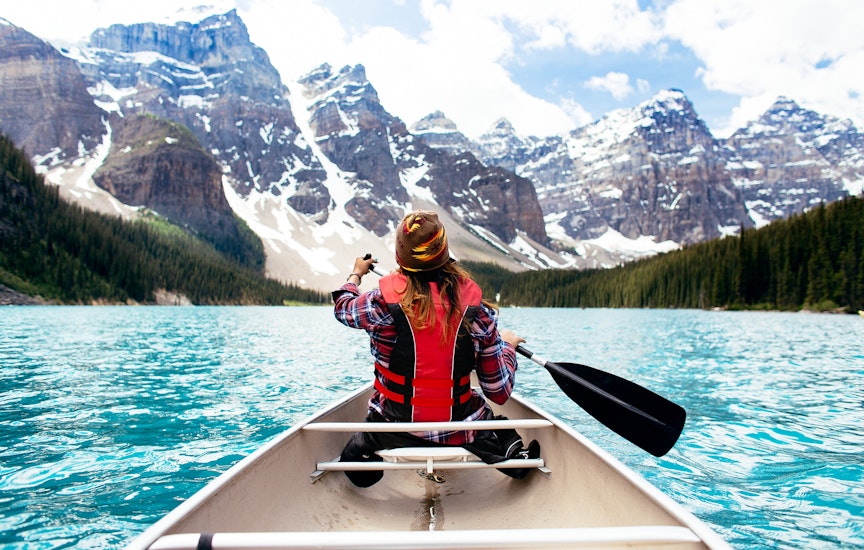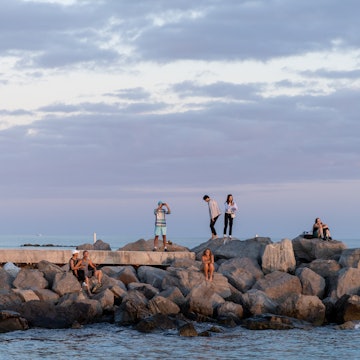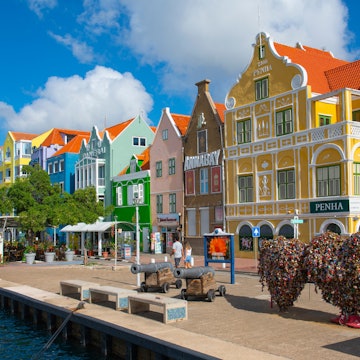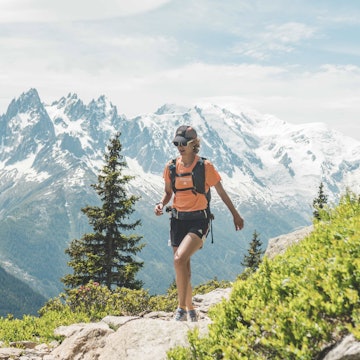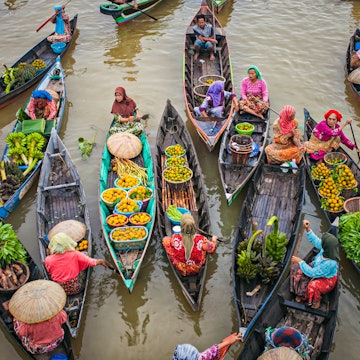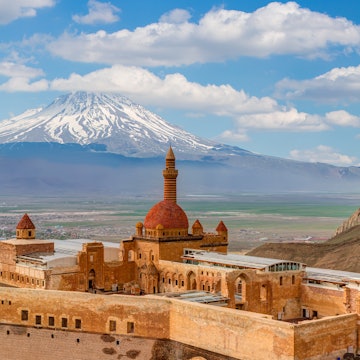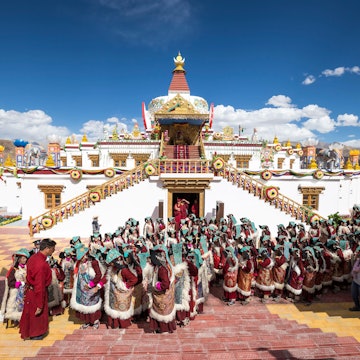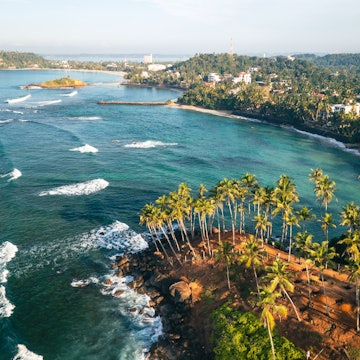
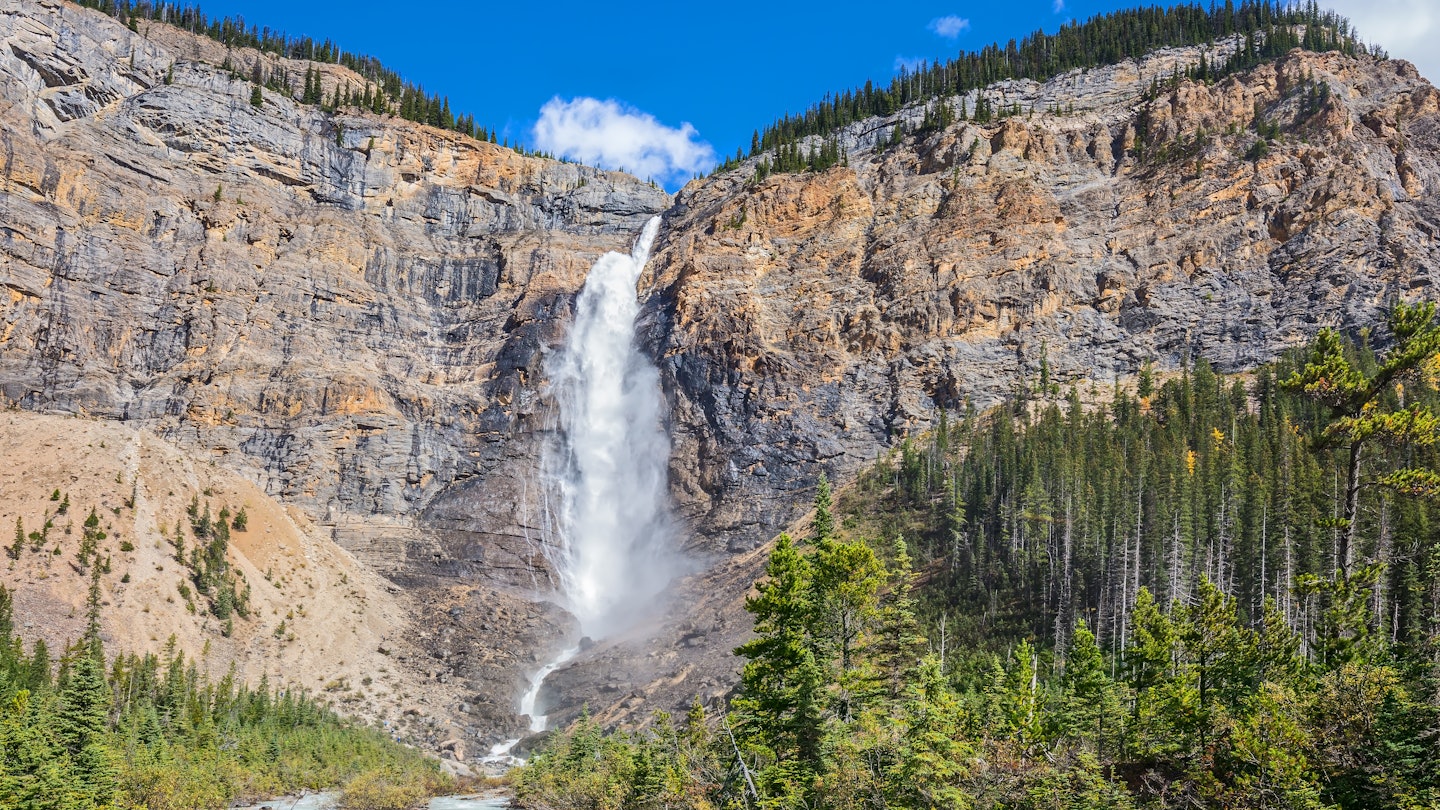
Yoho National Park. kavram/Shutterstock
While Canada’s Alberta and British Columbia provinces are alluring destinations any time of year, fall is undoubtedly my favorite. Crisp air and golden larches draw visitors every autumn to the province’s vast outdoor playground. You can enjoy the breathtaking scenery while hiking and mountain biking, paddling along alpine lakes, and standing atop overlooks and mountain summits. Between wildlife sightings, stunning vistas and even a surprise northern lights show, autumn in Alberta and British Columbia is one for the books.
With five national parks and more than 400 provincial parks, the area offers seemingly endless terrain to explore, and a road trip is the best way to maximize your vacation. I put together this route during my fall visit last year. The route combines three national parks, one provincial park and is filled with popular and lesser-known spots. The area surrounding Banff is close to several other parks, making it a no-brainer to visit several during your trip, and even crossing over into neighboring British Columbia with ease. This itinerary includes Banff National Park (Canada’s first national park), Yoho National Park, Kootenay National Park and Spray Valley Provincial Park.
I’m already planning my next fall road trip in Alberta – that’s how good it is. Here’s how to recreate it.
Trip length: 5 days; 488 miles
When to arrive and where to end: Fly into and out of Calgary airport (YYC). It’s only an hour and a half from Banff.
Things to know: Since fall is in the shoulder season, traffic in Banff shouldn’t be too much of a problem, but the speed limit in town is very slow (30km/h), so make sure to obey it. Be aware of wildlife (deer, bear, moose, elk, bighorn sheep, etc.) at all times, especially when driving in the morning and evenings. It’s also important to keep in mind that weather conditions can change at a moment’s notice. When driving back roads, be prepared for dirt or gravel and watch for rocks and rockslides that could fall into the road. There are many areas without cell coverage, so it’s wise to download a Google Map of the region and plan accordingly. If you need roadside assistance and have service, you’ll either have to contact your rental car company directly or a tow company. Since you’ll be visiting a number of parks, it’s key that you purchase the appropriate park passes for each one.
What to pack: Layers are always crucial in this type of year. Bring hiking boots, a fleece, and a waterproof and windproof jacket. A hat and light gloves are recommended for chilly mornings or evenings. Make sure to bring a good camera as well, as this is a very photogenic road trip. A backpack, reusable water bottle and headlamp are helpful if you plan to hike or go on a sunrise mission. Make sure to pick up some bear spray if you plan to hike.
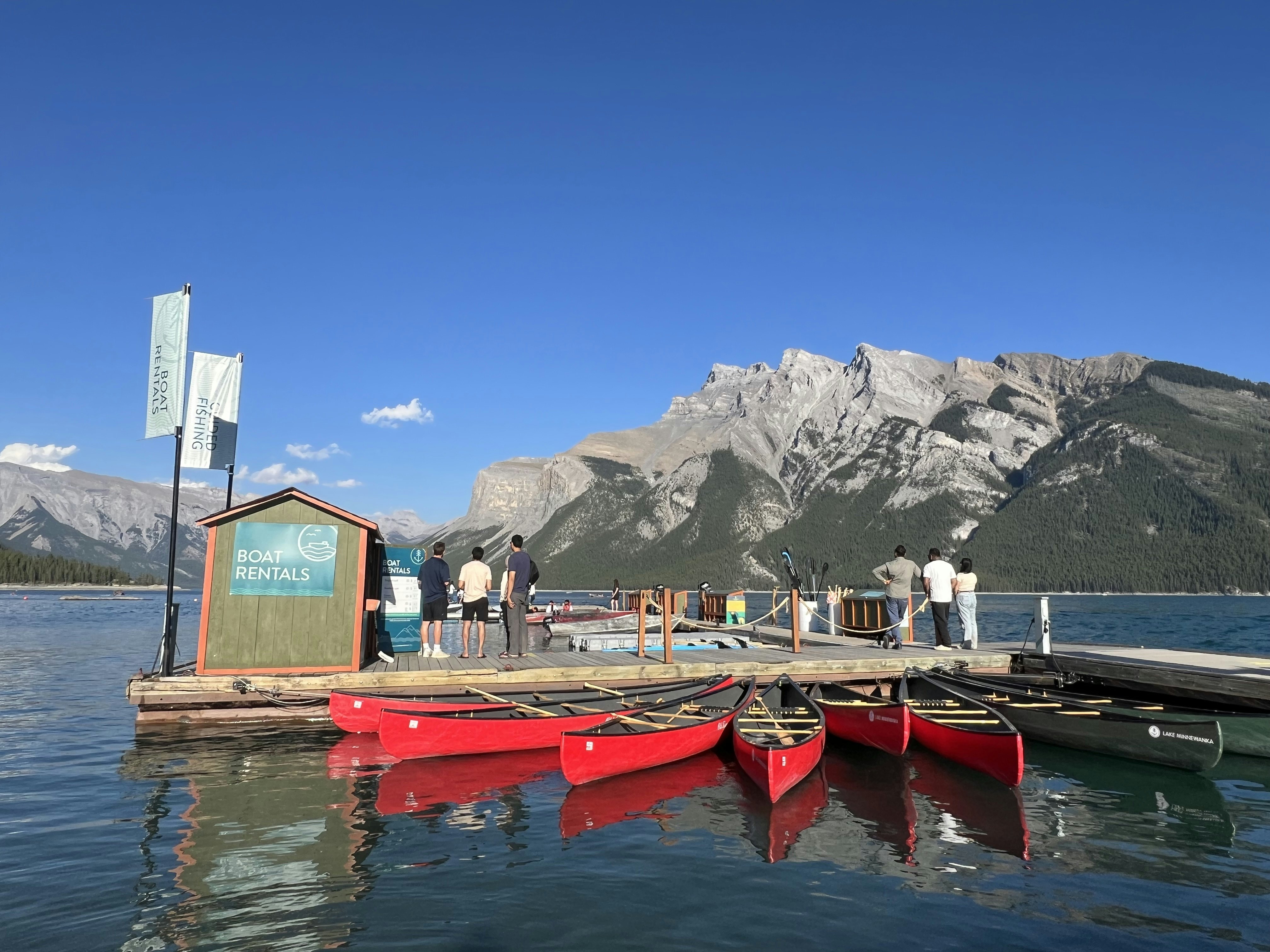
Stop 1: Banff + Banff National Park
Vibes: Chill mountain town with a fantastic aprés adventure scene.
Do: Welcome to Banff National Park! Plan for spending two nights here, as there’s a ton to do nearby. For the first day, you’re going to want to set your alarm for very early. Start the trip off right by watching the sunrise at Two Jack Lake. After, cruise along the rest of the loop on Lake Minnewanka Scenic Drive; it’s short but pretty. The next morning, drive to the Lake Louise Summer Gondola to hop on a shuttle bus to Moraine Lake. Since it’s one of the most popular attractions in the park, regular vehicle traffic is prohibited. I highly recommend going for sunrise (though you certainly won’t have the place to yourself, even that early). But it is spectacular. After you take your return shuttle, hop on the Lake Louise Summer Sightseeing Gondola up to the summit for views.
You really can’t go to Banff National Park without seeing Lake Louise with your own eyes. Lace up your hiking boots and head up the trail to the Lake Agnes Teahouse, open until October 1. Save some time to browse the shops in downtown Banff for souvenirs, or try a craft cocktail at Park Distillery. If you have time to squeeze in one more scenic spot close to town, head to Mt. Norquay Lookout, which overlooks Mount Rundle and the entire town. Wrap up an evening with sunset at Vermillion Lakes, and keep an eye on the sky for potential Northern Lights.
Eat: Banff’s food and beverage scene is robust and amazing. Carb up at The Fat Ox, where the chefs mix Italian and Alpine cuisines (think: elk meatballs and bison tagliatelle), resulting in delicious and hearty fixings. Don’t skip sushi at Hello Sunshine; it’s fresh and flavorful, and, as a bonus, they have private karaoke rooms. For the classic Banff dining experience, grab fondue at The Grizzly House. It’s an institution here with a quirky history. Bluebird Banff’s patio is perfect for lunch on a nice day; make sure to order the rosemary fries. I still dream about them. Plan for lunch at Whitehorn Bistro when you take the Lake Louise Summer Sightseeing Gondola; saddle up to an outdoor table and order yourself a Caesar, the classic Canadian version of a Bloody Mary.
Stay: Stay a couple of nights at Hotel Canoe and Suites, right downtown, but close to Highway 1 for easy access to multiple adventures. Their on-site coffee shop is a lifesaver for early mornings.
The drive (130 miles, 2 hours, 15 minutes): From the airport to Banff is 89 miles on the highway, taking about an hour and a half. Then, after your stay in Banff, it is approximately 41 miles, taking about 45 minutes to Yoho National Park. There’s a gas station directly across from the hotel, so it’s wise to fill up and grab some snacks after checking out. Along the way, you can stop at Johnston Canyon and hike to the lower (one hour return) and/or upper falls (two hour return). If you want to add on another detour, drive past your turn-off for Yoho National Park and head north on Highway 1 to the Peyto Lake Lookout, a sparkling turquoise gem. This adds just 50 miles/one hour total (there and back) to your journey.
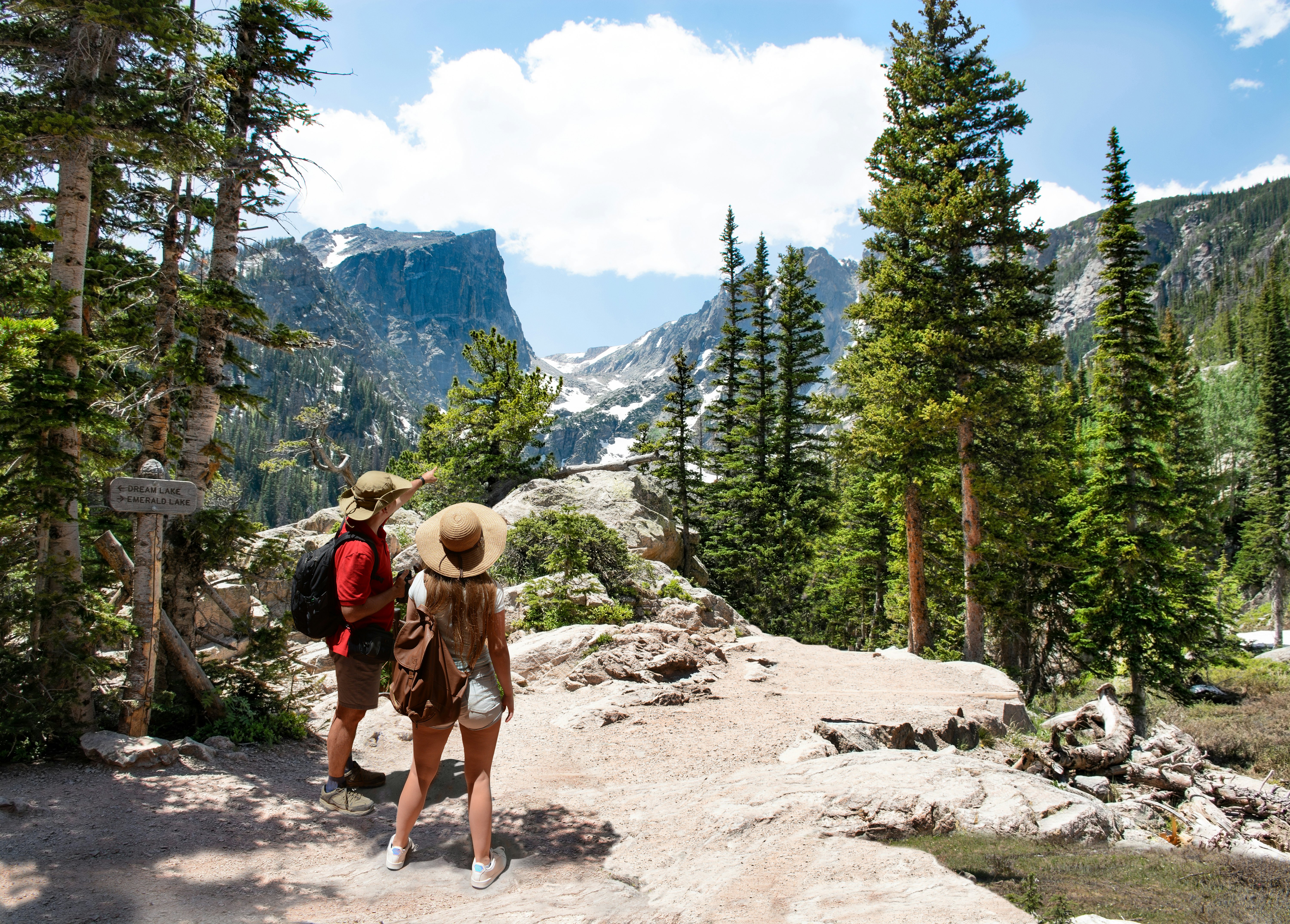
Stop 2: Emerald Lake, Yoho National Park
Vibes: Upscale mountain lodge that feels secluded.
Do: You’ve crossed over to British Columbia and are checking off your second park, filled with more natural beauty and attractions. Paddle a canoe at your leisure on Emerald Lake. If you stay there, you’ll have first dibs. Go see Natural Bridge Lower Falls, a unique rock formation and gushing waterfall. Stay on the waterfall train and drive the incredibly scenic Yoho Valley Road to Takakkaw Falls, where you can take a short trail up to a massive waterfall and get misted. Along this road are a plethora of hiking trail options, too, ranging in difficulty. Carve out a little time to stop in the Yoho National Park Visitor’s Center for information and souvenirs, located in the town of Field, right off the Trans-Canada Highway.
Eat: Dine at the lakeside Emerald Lake Lodge for dinner with impossibly beautiful views. In the very small town of Field, which you’ll pass by on your way to Emerald Lake, there’s another restaurant called Truffle Pigs with a diverse and tasty menu. Don’t leave without a slice of their homemade pie.
Stay: Emerald Lake Lodge, hands down. Cradled by towering mountains and a ridiculously pretty blue lake, this lodge couldn’t be in a more picturesque location. With no cell service, and wi-fi only available in the main lodge, it’s a place meant for disconnecting with the world and Nature Appreciation 101. On a budget? Try Kicking Horse Campground.
The drive: (103 miles, 1 hour 55 minutes): You’ll be heading back in the Banff direction, to Kootenay National Park, so anything you missed on the way to Yoho, now’s the time to see and do it. You’ll turn onto the scenic Highway 93 South. The main (and only) road through Kootenay National Park. Please note that there are no services in the park, so make sure to fuel up in all senses of the word before venturing down Highway 93. There’s also zero cell service; however, there are four well-marked emergency telephones along the 58-mile stretch of road to the town of Radium Hot Springs. If you’re in the mood for a hike, a quick 7-minute detour off the Trans-Canada Highway at Castle Junction will land you at the Arnica Lake Trailhead. This 3.2-mile (one-way) hike is known to be a fantastic golden larch viewing spot in the fall.
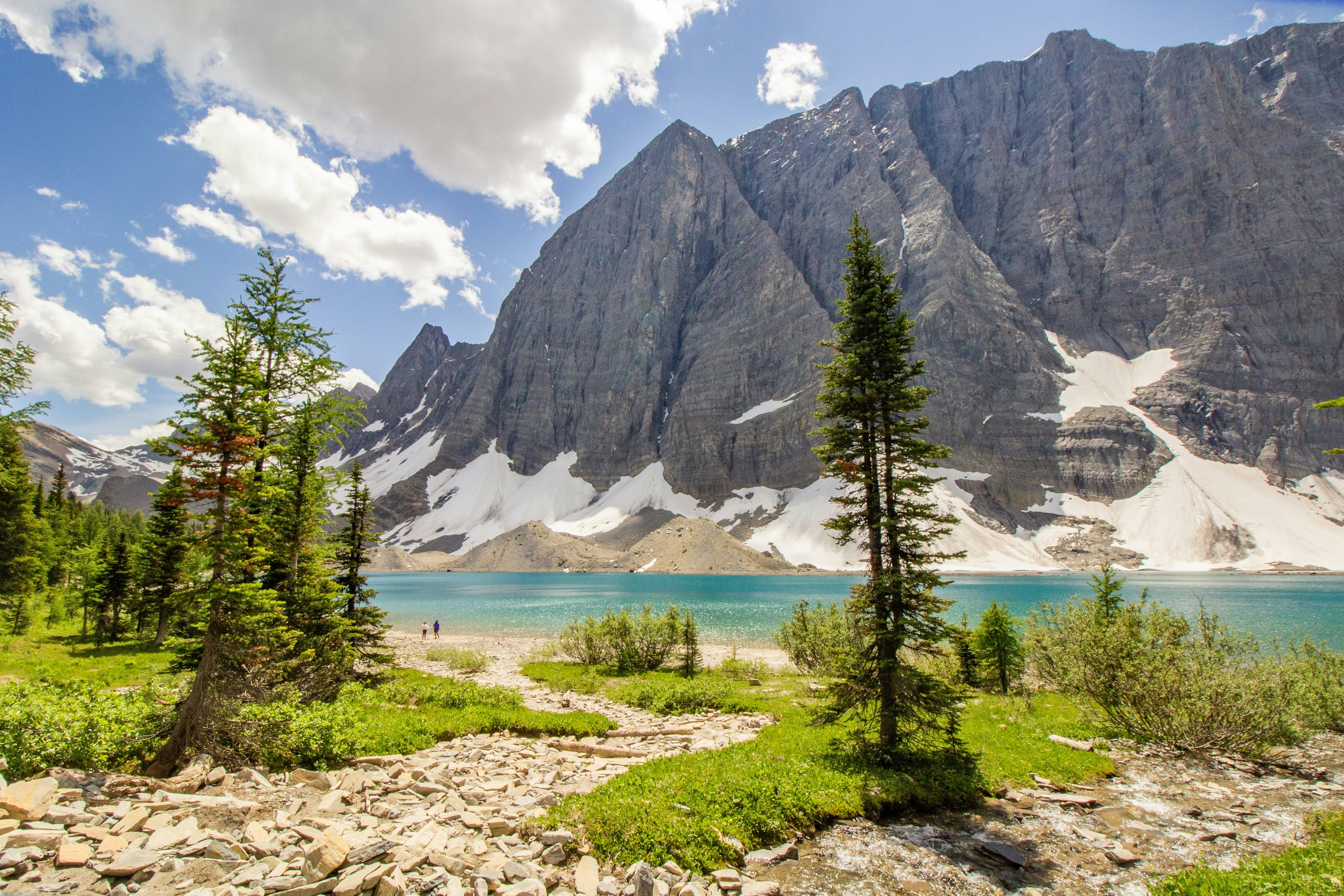
Stop 3: Kootenay National Park, B.C.
Vibes: Hiking and hot springs.
Do: Kootenay National Park is another British Columbia park that borders Alberta near Banff National Park, making it a breeze to pop over and explore a few spots. Marble Canyon is a must-do; walk the easy, just shy of a mile round-trip trail, which skirts the dramatic canyon and is filled with turquoise water. Stop just off the highway at Numa Falls to take in the rushing cascade. The drive itself is an eye-candy wonderland, so soak up the landscape along all 58 miles. If you got an earlier start and are looking for a full-day hike, the 6.5-mile round-trip trek to Floe Lake rewards handsomely with meadows, glaciers and mountain peaks. Plan accordingly and pick up a sandwich from the Village Market in Lake Louise so you can enjoy a picnic lunch at the Vermillion Crossing Day-Use Area or Olive Lake, with pretty views and tables.
Eat: Radium Hot Springs has a solid variety of restaurants and aprés adventure spots to grab a drink. Choose from classic pub fare at the Horsethief Creek Pub & Eatery, grab a schnitzel at the Austrian favorite Old Salzburg Restaurant, or order off the creative menu at Goat Street Kitchen + Tap.
Stay: Your destination for the evening is Radium Hot Springs, where you can choose to soak in the natural hot spring waters after a day of adventuring. There are many lodging options, including the Radium Elk Park Bed and Breakfast and the larger Bighorn Meadows Resort.
The drive (83 miles, 1 hour 32 minutes): Make your way back up Highway 93, perhaps stretching your legs along a short hike such as the 1.7-mile round-trip jaunt to Cobb Lake or the 1.5-mile hike to Dog Lake. Before you reach Banff, you’ll get off at Highway 130A/Sunshine Road to make your way to the Sunshine Village lift station. There you can park and purchase your lift tickets up to the top, where you’ll be spending the night at the only mountaintop lodge in Banff.

Stop 4: Sunshine Village, Alberta
Vibes: Ski lodge without the skiing.
Do: Hike in Sunshine Meadows. Take the Standish lift from the lodge base up to Sunshine Meadows, where you’ll have the opportunity to spot larches, wildlife and hike amongst the postcard-level beauty. There are more than 6 miles of trails to explore.
Eat: The lodge has an on-site Java Lift coffee bar and a dine-in restaurant called The Chimney Corner, which offers a full breakfast and dinner menu.
Stay: Spend one night up in Sunshine Village at Sunshine Mountain Lodge for unreal views and hiking. The lodge is host to a couple of restaurants, a spa, and Banff’s largest outdoor hot tub, perfect for stargazing at the end of the night.
The drive (25 miles, 30 minutes): On your last day, you’ll take the gondola back down from Sunshine Mountain Lodge to your car, and start making your way back to the airport. But not before adding one more park to your list: Spray Valley Provincial Park. The starting point for this portion of your journey is in Canmore, an adorable town worth exploring if you have extra time.
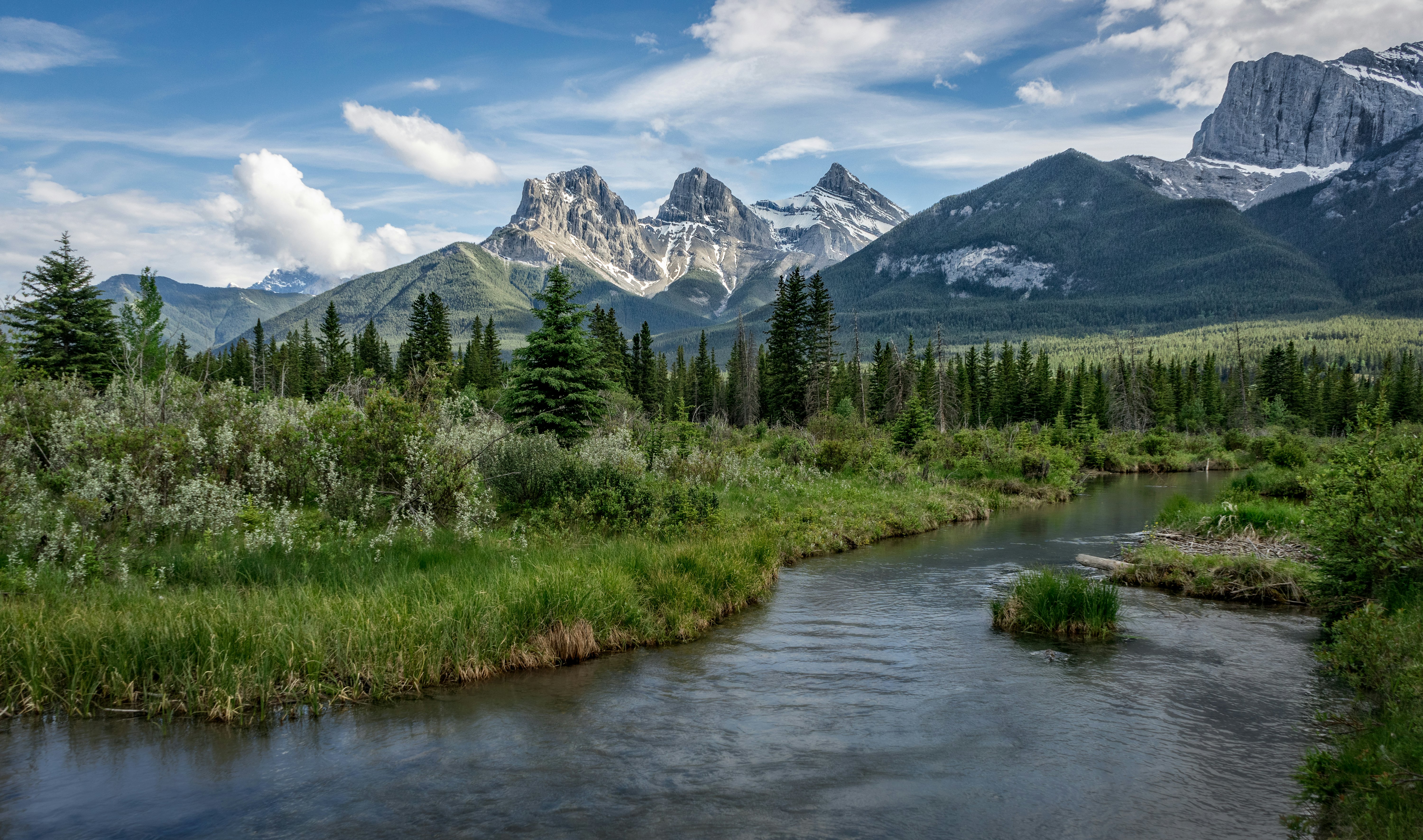
Stop 5: Spray Valley Provincial Park
Vibes: Back roads and untouched wilderness.
Do: Walk around Canmore and drive at least a portion of Highway 742. If you have time, hiking options abound. Hiking/parking at the trailheads here require a Kananaskis Conservation Pass, which can be purchased ahead of your trip online. Hike the short .6 mile Blackshale Suspension Bridge trail for alpine views galore. If you’re looking to get your heart pumping a bit more, try the steep West Wind Pass trail. It's 3.2 miles and rewards with panoramic views over the Wind Valley and the Spray Lakes Reservoir.
Eat: Canmore is full of great eateries. I highly recommend Where the Buffalo Roam Saloon. If it’s nice out, sit on their patio and people watch while you eat delicious and seasonally crafted bites.
The drive (130 miles, 2 hours, 48 minutes): You can also do this as a longer loop from Canmore, taking Highway 742 (also known as Spray Lakes Road or The Smith Dorrien Trail) and Highway 40, so you don’t double back, or you can just do a portion of Highway 742 and return back to Canmore to hop on the Trans Canada Highway 1 back to the airport. Please note that Spray Lakes Road is a gravel, grated road, so your speed will be slower, and it’s best to allow additional time.
Tips for EV drivers
There are EV charging stations at gas stations along Highway 1, in the towns of Banff and Lake Louise, and in Radium Hot Springs. The trickiest stretches might be along Highway 93 to Kootenay National Park, and the loop around Spray Valley Provincial Park, but only if you haven’t topped off recently. As long as you plan out your stops and charging time, it should work out just fine.






